-
Head The Persian cat's head is rather massive, with a flat shape of the skull, with wide cheekbones, with a small, short, wide and slightly flattened nose (nose standards differ in various felinological associations). The chin of the animal is strong, rounded wide.
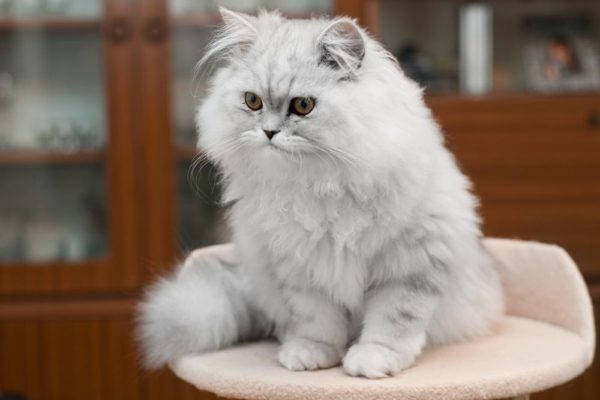
- Persian cat is a man's best friend
- Persian Cat Care
- Peculiarities of Persian cats' fur
- Daily grooming of Persian hair
- How to take care of a Persian cat
- What is the best litter box/litter box for a Persian cat?
- Health of Persian breed cats
- Persian Cat Care Tips
- How should a Persian cat be bathed, and with what frequency?
- How do I take care of my Persian cat's teeth, ears, eyes and claws?
- Peculiarities of care for the Persian cat
- Proper care of a Persian cat: hygiene
- Persian
- Breed peculiarities
- Persian cat
- The most important qualities of the breed
- Care of eyes, ears, claws
- Shearing Persian cats
Persian cat is a man's best friend
Persian cats are excellent human companions. They are intelligent, empathic, always have a subtle sense of human mood swings, and can really comfort in a difficult moment. Persians are incredibly attached to humans, and for them it becomes the center of the whole big feline world. So how to keep such a cat at home and how to find an approach to the Persian beauty?
It is very difficult to imagine a Persian cat in the wild living conditions, because this breed is incredibly attached to people, constantly requires care and warmth. Persians need constant attention, communication with people and tenderness from the owner. And although the care of Persian cats is rather difficult because of their beautiful and thick long hair, and peculiarities of the eyes, this animal will certainly give you all their love and affection.
Unlike most representatives of the felines, Persians are very friendly and peaceful. They easily come into contact with small children, as well as with adults. Persian cats are almost devoid of any aggression, especially against people. You need not worry about the fact that the cat will bite or scratch a child on purpose – this breed is not characteristic of such behavior. Most likely, faced with active play of children, the cat will run away and hide, rather than be aggressive. However, even after running away, the cat will quickly return to humans, because it cannot stand long periods of loneliness.
Because of their gentle nature, cats of this breed easily get along with all members of the family. Persian cats are extremely patient and docile. These felines rarely cause damage to furniture, flooring, or wallpaper in the house. Although there is a lot of energy in this cat, they would rather spend it playing games than sharpening their claws on a new couch. Persian cats love to participate in various games and are happy to join any activity.
Undoubtedly, the Persian cat is the most family-oriented and contactable breed. They are very balanced and love even persistent, noisy and active children. The cat becomes attached to its owner for life, always protects it from other animals, is jealous and worried. Persian cats vitally need affection and attention. Next to the owner, these animals easily tolerate any long trips and other stressful situations. And when people are away for a long time or spend the whole day away from home on a regular basis, the Persian can wait for their owner without even touching water or food.
Persian Cat Care
This cat breed needs quality and constant care. Voluminous coat of the animal requires periodic bathing. Persian cat should be groomed at least once a week, combing bathing with daily combing with fine teeth. A special coat-care glove can be used instead of a comb. With this approach, the pet will always look great. In summer, cats of Persian breed are often trimmed with a machine, leaving the hair on the tail of the animal. Also, the care of Persians includes the following necessary procedures:
– The inclusion of dry food in the diet to prevent the appearance of tartar.
It should be noted that Persian cats do not resist during grooming procedures. Therefore, it will be easy for them to clip claws, bathe, dry with a hair dryer, trim, treat eyes or ears. The cat is fed before the treatments and rewarded with her favorite treats afterwards. This way the cat will develop a pleasant ritual, and it will not be afraid of such simple and basic grooming procedures.
Peculiarities of Persian cats' fur
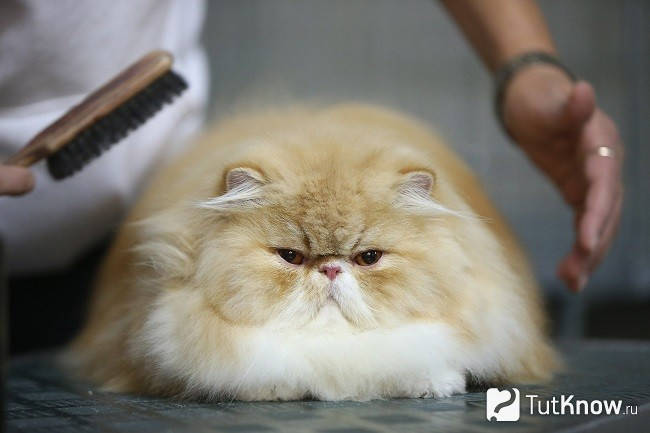
At cat shows, we come to admire energetic, shiny furred, beautiful moustachioed, striped cats. At the same time, it never occurs to us how much effort, employment and finances a breeder takes to make their pets look so vigorous and presentable.
A cat's beautiful fur is an indicator of the condition of its body and the responsibility of its owner. Only vigorous and groomed animals have flawless, sparkling, and smooth hair. A bad indicator of health is a dull, piled-up coat.
Each coat variety of murk has its own specifics of care. Bald cats need frequent water treatments because they sweat the most, with short to medium length fur, are minimally washed and brushed. Long-haired cats have the most care and hassle with their hair.
The breed with the longest hair, up to 13 cm. – Persian. The splendor of its fur, won, and gained popularity. When the animal moves, it shimmers and shimmers, mesmerizing to the eye. It is most often demonstrated at exhibitions. It is the grooming of the animal that determines the distribution of prizes. Maintenance of long-haired cats for show shows is a whole scheme of different procedures. Some people devote their entire lives to this profession. This art is "high fashion" for animals. Persian cats have a very long, thick and light coat – a good field for the breeder or groomer (pet groomer).
Since the coat is very airy, it is prone to tangling. If not properly cared for, the pet will be very difficult to clean, sometimes it is even necessary to completely trim the hair cover. Each owner has his own opinion and practice concerning the hygiene of his pets. Some breeders believe that Persian cats should be bathed not often – once every six months, and combed out almost every day. Some prefer to bathe and brush their friends often.
Daily grooming of Persian hair
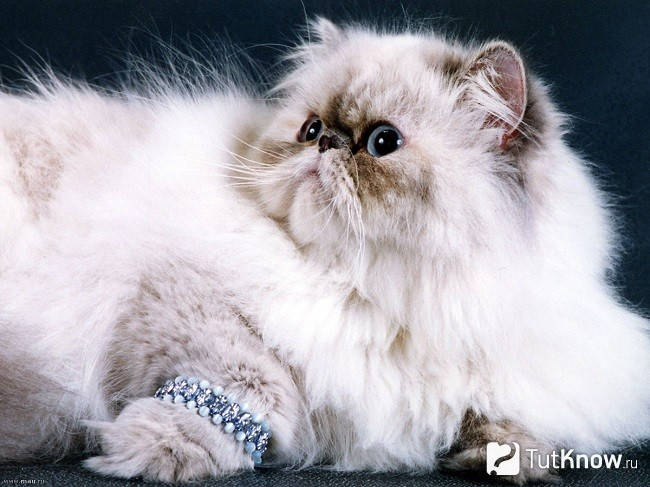
This breed has hair undercoat and tail hair, very slowly recovered from the procedures with a fluffer. Professionals prefer to use for combing different combs with thicker or sparser, blunt teeth, so as not to scratch the skin of the Persian. There are also special combs, with different lengths of teeth, for combing out the tangles. Only paws and muzzle are combed out with a hairbrush. Tools should be made of metal materials, plastic hair gets electrified.
You start with the head, then the back, chest, tummy, paws, but practically do not touch the tail. Use a brush with thick, natural bristles to smooth out and brush away any missed hairs. At the end of the procedure to complete the spray on the "hair" antistatic spray at a distance of 15-20 cm. Spray conditioner is used once every seven to ten days.
It is desirable to spray a little citric acid solution on the coat every day – it gives an extraordinary shine. Some owners also apply talcum powder, which prevents the hair from tangling.
When Persians molt, even more care is needed for their coat. This is the only way your pet will ingest fewer hairballs that clog the gut, and you'll prevent unnecessary soiling of your furniture and carpeting.
Cats love to sit by the water and watch, but rarely do any of them dare to bathe themselves. They are very neat and clean animals. Ordinary cats are rarely subjected to water procedures, but artificially bred cats, due to the peculiarities of their longer fur, are often enough. So how can you help your cat to get used to water without stress?
It is better to develop the habit of "wet" activities for Persian cats from childhood, while playing. Hair care will be an urgent necessity for them. Immerse the kitten's favorite toys in a small container of water. Sitting at the makeshift "pool" the cub will begin to amuse himself – he will definitely get his paws wet. You can unscrew the faucet in the bathroom, the sounds of running water will attract his attention. Some paws play with running water, sometimes drinking, even playing, wetting his head.
How to take care of a Persian cat
It is worth noting right away that Keeping a Persian cat is quite expensive and troublesomebecause a lot of effort and money is spent on care, food and veterinary services. Persian cats are among the most man dependent breeds, because they are not adapted to life "in the wild" and are completely dependent on people. Perhaps due to this fact they are so docile and quiet: they can be held and stroked for long time and they won't get bored; they will lie down where they are put; they are more patient than other breeds in taking care of them. Even to not very tender baby caresses they are quite calm.
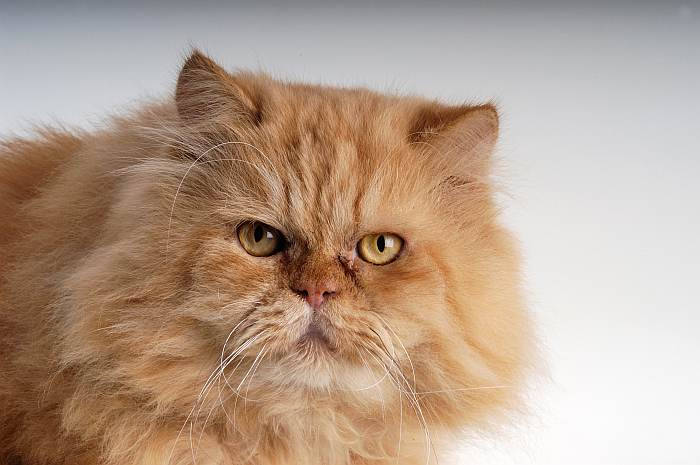
Persian cats are not very picky about the area of "their territory". They can live happily both in large country houses and in small apartments. The main thing for them is the attention of owners. It should be noted that even living in a private home, the Persians do not tend to leave it, so you don't need to think about walks with your fluffy pet. In addition, with their weak immune system, walks can even be dangerous to health.
Persian cats coexist peacefully with other pets, almost never coming into conflict with them. They get along with birds and rodents, or rather ignore them. Due to this temperament and some laziness, Persians make bad mousetrappers.
Since Persian cats are owners of luxuriously thick hair, which even with good care remains everywhere, the owners are recommended to buy a powerful vacuum cleaner.
To ensure a comfortable life for the Persian, it is recommended not only to buy the necessary pet products, but also to take care of favorable conditions. Even if your cat doesn't have problems with breathing because his face is too flat (which most breeds suffer from), the air in the house must be maintained at proper temperature, since Persian cats do not tolerate heat very well. Cats not participating in shows are sheared by some owners for the summer. When moving or transporting Persians, you must remember that in stressful situations they can develop respiratory failure (especially when transported in the cargo compartment of the plane), which sometimes leads to the cat's death. So when traveling by plane, look for an airline that allows you to take your pet in the cabin.
What is the best litter box/litter box for a Persian cat?
Persian cats always follow their instinct to bury, so they can spend a long time rummaging around in the litter box, spreading filler in all directions (not on purpose, of course). For representatives of this breed the most suitable will be a large, spacious litter box with sides from 10 cm high or a closed toilet. It is recommended to buy the litter box for an adult cat, because kittens are growing very fast. The configuration of the litter box should be checked with the breeder.
To get rid of the smell, it is recommended to use a filler (you can even under the grid). The best type of lumpy litter removes the smell, the worst type is wood litter. To prevent the filler from spreading all over the house, it is recommended to place a mat in front of the cat's litter box.
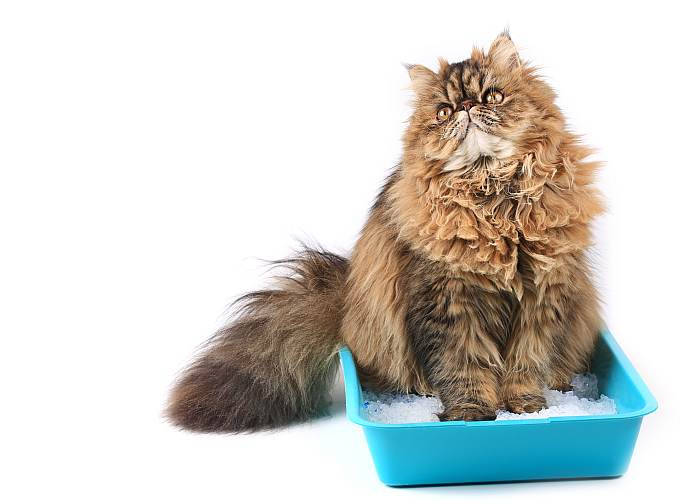
Only natural fillings are used for kittens because they are safe for your health (in case the kitten accidentally swallows them). Before using any kind of filler, you should carefully read the instructions on its use and disposal.
After each visit to the litter box, check the cat's furThe litter particles may stick to the cat's long hair and cause great discomfort at times. Some Persians even refuse to go to the toilet/litter box if they feel that there is something extra on their stomach, paws or tail. This sometimes makes the animal very nervous. Inspection is also necessary to prevent the cat from accidentally swallowing filler while licking itself. Silica gel litter is dangerous because once inside the animal, it increases in size and can thereby cause intestinal obstruction.
Most Persian cats refuse to go to a dirty litter box. Therefore, if you do not have an automatic or biotoilet, it is advisable to buy two litter trays at once. There are finicky cats who go to one litter box "small" and to the other "big" litter box. If you have several cats in the house, each cat should have its own litter box + 1 spare.
Health of Persian breed cats
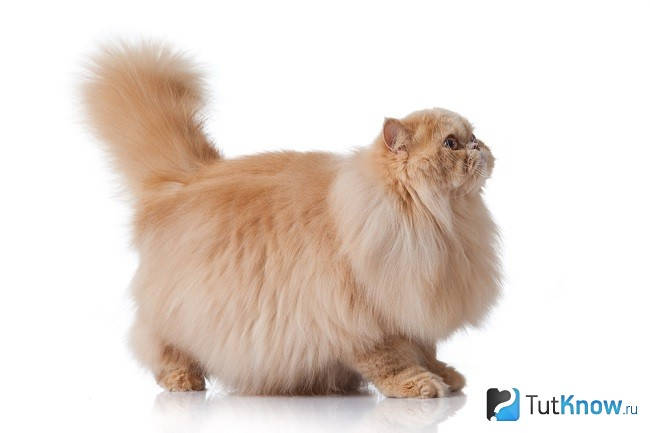
In general, the Persians are considered to be quite strong animals, but have a large bouquet of hereditary predispositions (which are not always realized in life).
Thus, veterinarians noted an increased incidence of polycystic kidney disease and hypertrophic cardiomyopathy (the scourge of so many cat breeds). Persians also often suffer from early blindness, appearing in kittens as early as four weeks of age. There is a tendency for formation of tartar and gingivitis (inflammation of the gums) with all the ensuing problems if neglected. Increased tearing also requires attention and timely care.
And of course, the famous problems with breathing and often – with a bite. This is particularly characteristic of the American branch of the Persian with a flatter muzzle. Breeders and breeders are constantly working on this, but so far these problems have not been solved.
But even with so many possible health problems, longevity of Persian cats (with good care) is very good – 15-20 years.
Persian Cat Care Tips
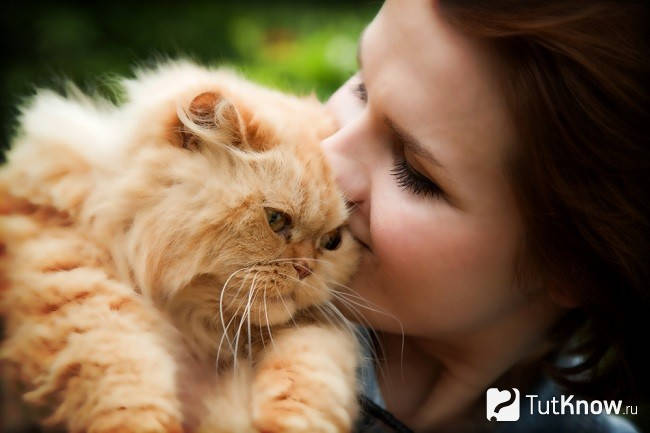
Wonderful thick coat of Persian cat requires the most careful attention – it is the calling card of the animal, and to let things drift on their own is not good. And if you do not want your apartment to turn into a warehouse of lumps of fur, you have to deal with the coat of your pet regularly (at least twice a week, and during the seasonal molt – even more often).
Yes, and the care of the fur of these pets – an art that requires knowledge of the sequence of manipulations and a whole arsenal of tools and special cosmetics (hair conditioners and sprays-antistatic). Even the most basic brushing is performed in several stages and with different brushes / combs (let alone the preparation for the show). But that is the lot of owners of this breed. You will have to work hard.
The same goes for bathing. Persians do not like bathing and therefore they must be accustomed to necessary water procedures from a young age. As for bathing frequency, there is no consensus among owners. So, you will have to decide this issue on your own.
It is also good to spray a bit of citric acid solution on Persian cat's fur every day – it makes the coat shine. Sometimes talcum powder is applied to their fur, it prevents hair from tangling in tangles.
The condition of your pet's mouth, teeth and gums should be inspected regularly, and emergency measures should be taken if necessary.
From time to time the persian should have its claws trimmed with a special tool, a claw trimmer, which allows to painlessly deal with this not very pleasant procedure.
And one more question that can't be ignored – nutrition. Persians are known to be gluttons and they suffer from obesity with the connivance of their owners. Therefore the most advantageous and convenient way to feed them is to feed them industrial food with the most balanced elements. It is optimal to feed an adult cat no more than 2 times a day (morning and evening) according to the norms indicated in the manufacturer's instructions.
How should a Persian cat be bathed, and with what frequency?
Due to the peculiarities of the muzzle structure, Persians are less adapted to self-care than other cat breeds. Depending on the type of coat and grooming system You can bathe a Persian once a month or 2-3 times a year. For that purpose you should fill the bathtub with not more than 10 cm of warm water (+38-40°C), spread a towel or rubber mat on the bottom, prepare everything necessary for bathing, prepare the cat (put absorbent cotton in the ears, splash eyes if necessary). Instead of a tub you can use a bowl with high sides.
It is best to bathe the cat with two people. It is strictly forbidden to use shampoos for people. Persian cats can only be bathed with special shampoos for long-haired cats, for example, with medicinal herbs or seaweed. Persian black cats should use tinted shampoos.
Before using the shampoo, cat hair should be degreased with dishwashing detergent. Then the Persian should be well soaped (except the head) and thoroughly rinsed off. Repeat this one or two more times. While soaping you should pay special attention to the dirtiest places: the tail, paws and chin. If there is a need to shampoo the head, one should first put special eye drops in the eyes of a Persian. During the last rinsing it is important to make sure that the shampoo is completely washed off, because its residue will glue the hair very quickly when the coat dries.
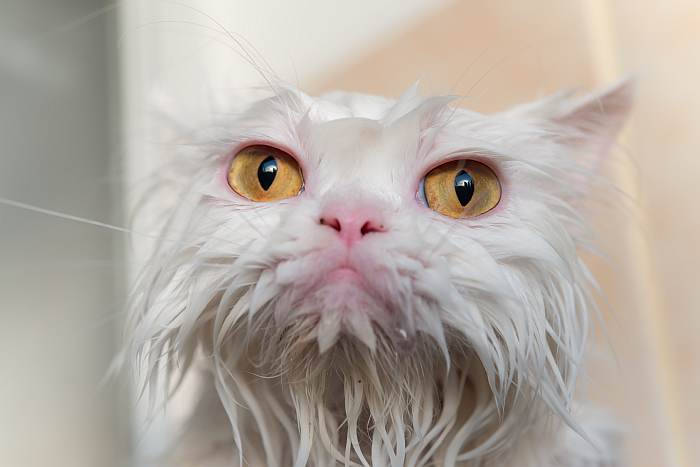
The cat should then be wiped down with a bath towel. It is advisable to apply grooming powder and wait for some time (5-7 minutes) on a still wet coat. Then dry the coat with a hair dryer. The standard brushing should always be the end of the bathing (see "how to take care of the hair"). 2-3 hours after washing, it is recommended to use antistatic spray.
How do I take care of my Persian cat's teeth, ears, eyes and claws?
Teeth. Yellow plaque on the teeth is a cosmetic defect and the least of the dental problems Persian cats may have. Dry food is a good preventative for dental problems. Pet stores also carry a large assortment of special chew toys to help clean the teeth. Because of the special structure of the skull and jaw, to prevent gingivitis, periodontal disease and tooth decay, Persian cats need Brush their teeth as often as possible, at least once a week. To do this, use toothpicks and brushes designed for animals.
Ears. To care for the ears of a Persian cat, you need to have absorbent cotton / cotton swabs (with stops for newborns) and a wetting liquid (a special product or any vegetable oil). Before cleaning, the absorbent cotton is moistened and squeezed to such an extent that the liquid does not drip or drip into the ear. Strong pressure on the skin on the inner surface of the ear is prohibited, as it is easily traumatized. Unpleasant sensations may provoke aggression in the cat. Under no circumstances should you clean deep into the ear canal, as this can cause serious hearing problems. There are special drops for deep cleaning. It is recommended to clean the ears once a month or as they get dirty (in the latter case you should check them more often). In addition, for aesthetic purposes, it is recommended to trim the tassels on the ears. This simple manipulation visually makes the head of the Persian cat larger and the ears smaller.
Eyes. Contrary to popular belief, not all Persian cats have profuse tears. Nevertheless, eye care is very important. You should wipe them every day.But not with absorbent cotton as its fibers can easily injure eyes of Persians, but with soft cloth (with low pile), paper or gauze napkins. It is recommended to soak the cloth in special drops or cool boiled water.
Peculiarities of care for the Persian cat
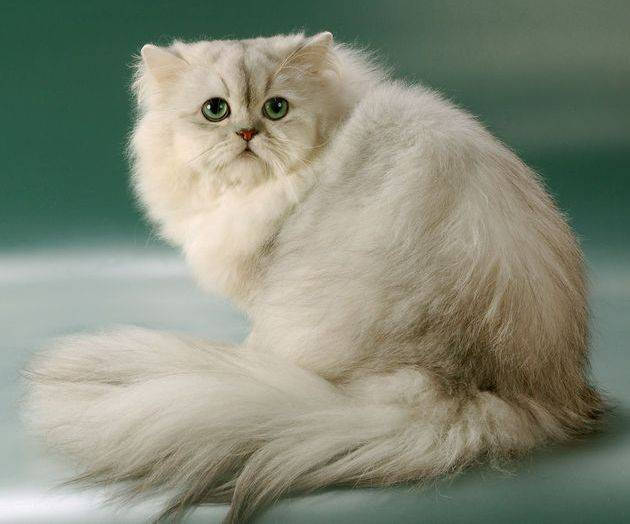
It is customary to consider the care of a Persian cat a difficult and painstaking work. The main attention should be paid to the hair, the distinctive feature of which is a thin, long and soft lint, which is prone to rolling. Since combing should be performed obligatory several times a week, the kitten should be accustomed to this procedure from the very beginning. It is performed with steel combs with short blunt teeth. Fluffers are not used in home care. If you notice tangles, you should try to separate them into individual hairs, but if you cannot, you should carefully cut the rolled-up hair. When preparing for a show, it usually requires the intervention of a professional groomer, who will make a professional haircut. You should also periodically perform a regular decorative haircut, which will greatly facilitate the care of Persian cats and help them easier to endure the hot summer.
Proper care of a Persian cat: hygiene
The Persian requires frequent bathing. It is optimal to perform this procedure once a month with the use of a special shampoo for long-haired cats. At the same time, it is important not to let water get into the pet's ears and thoroughly rinse off the shampoo residue.
After the treatment, the cat should be wiped with a towel and dried with a hair dryer. To improve the appearance of the pet, you can additionally use conditioners or antistatic sprays. Since this breed of cat is prone to colds, it is imperative to keep them warm after bathing and eliminate the risk of drafts.
Persian cat care also includes regular cleaning of eyes from secretions and weekly cleaning of ears with a cotton swab. Unlike other breeds, Persians should have their noses cleaned daily because, due to its small size, secretions and dirt easily accumulate in it, as a result of which the Persian cat starts sneezing.
If necessary, claws can be trimmed with a claw cutter, but when performing this procedure, you should be extremely careful and cut no more than 2 mm. Otherwise there is a risk of damaging the blood vessels, which may cause severe bleeding and great discomfort to the animal. Claws can be trimmed every 2 weeks on the front legs and once a month on the back legs.
Persian
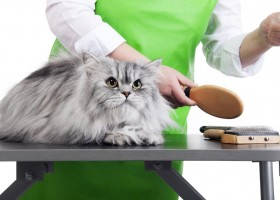

Persian cats are calm and balanced, affectionate and very attached to the owner. Pets of this breed are playful, not aggressive, love attention, but do not try too hard to attract it. They have a soft pleasant voice. They trust and love only those who treat them in the same way. Can show their loyalty or regal majesty, depending on their mood.
Experts have different opinions about the origin of Persian cats. The roots of these long-haired cats go back to Iran. The first representatives of this breed were brought to Europe by the Italian traveler Pietro della Vella as early as 1620. In England, Persian cats have become particularly popular. British Queen Victoria kept ten blue Persians, and ordered a small castle to be built for them.
Persian cats are very fond of attention and resent if the owner does not give them enough time. From the lack of attention, the pets can even get depressed and moping. They like to play with various small objects. Some Persian cats may bite (mostly they do not bite the owner, but their family members or guests).
Persian cats are used to a pampered lifestyle. They are house pets, they are quite comfortable in the apartment and are not very eager to go outside. Equip a bed for the Persian (a cot or house) away from heaters and draughts. If there are plants in the house, you can take care of placing a pot of grass (sprouted oats or wheat) near the pet's bed so that he will not chew your flowers.
Breed peculiarities
The main feature of Persian cats is a long soft hair, which must be constantly combed out. If the owner does not have time for this, the hair of the pet will soon get into tangles, which can lead to skin infections and inflammations. For the most part, cats are very tolerant of hair brushing, understanding it to be a sign of attention from their owners.
The diet of Persian cats should be chosen according to the age and health of the cat. You can choose natural products (but not porridge with fish or minced meat, but a full menu consisting of meat, dairy products, vegetables). Or choose cat food, which is available in different price categories – from economy class to super-premium and holistic class. Prepared foods are available as dry or canned (pâté, meat pieces in gravy or jelly). The benefits of the foods include a balanced composition designed to meet the needs of pets.
For Persians, it is recommended to choose cat food for long-haired breeds – it contains components that encourage gentle removal of lumps of hair from the stomach.
Persian kittens are picked up from their breeder at 2-3 months of age, when they can be switched from breastfeeding to live or canned food. Vaccinations against a number of dangerous diseases are given to the pet at about 3 months of age, after the preliminary worming. The feeding ration is adjusted to the age of the kitten.
The care and maintenance of a Persian kitten includes regular brushing, cleaning of the ears and eyes. It is not advisable to bathe a kitten before 12 months of age. Regular antihelminthization and flea control is a mandatory procedure.
Care for a Persian kitten includes the mandatory care of the pet's long hair. Hair length can reach 15 cm, should be combed out daily, you can sprinkle it with talcum powder. Long-haired Persians are recommended to have their hair cut 3-4 times a year. Professional grooming will help to keep coats neater, to get rid of tangles in time. Cat grooming does not include haircuts on the head, muzzle and ears. Nails on front paws should be trimmed once every 2 weeks, and on hind paws once a month.
Persian cat
Cats of the Persian breed are extremely popular due to their malleable character and ability to get along with people and other animals. These cats do not require minute-to-minute attention, but are unlikely to be suitable as a pet for very busy people due to their individual characteristics.
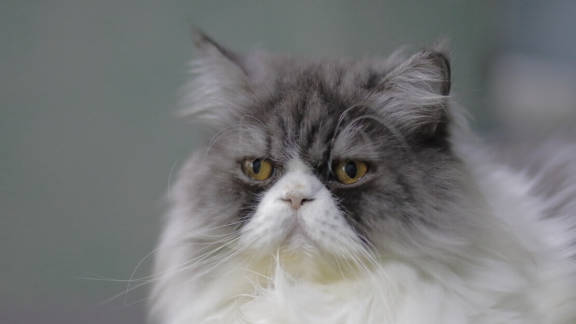
The Persian cat needs complicated daily grooming, lures food from the table and is indifferent to catching mice. All of this could have made the breed unpopular, but the effect has been reversed. Persians are still in the lead in ratings of the best pets to keep at home, and future owners are ready to stand in line for a kitten.
Who he is – a typical owner of Persian – and what's special about this fluffy cat – this article's material.
The most important qualities of the breed
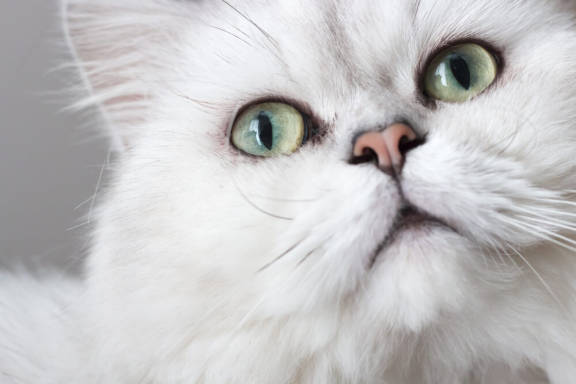
As in the case of other breeds born more than a hundred years ago, the history of the Persian is not precisely known. According to one of the most common theories, the ancestors of modern Persian cats migrated to Europe from Khorasan (Persia) and Angora (Ottoman Empire).
Khorasan cats were brought to Italy. Their spread throughout the Old World is attributed to the Italian aristocrat Pietro della Valle. According to his manuscripts from the late 1500s and early 1600s, long-haired cats had silky gray fur and were distinguished by their stocky build.
Angora cats began their journey through Europe, ending up in France and then in Britain. The discoverer of the breed was French scientist Nicole-Claude Farby. According to memories of contemporaries, the Angora cat was snow-white, with slightly pointed ears and a wedge-shaped skull.
Later, the Khorasan and Angora cats were crossed, which greatly influenced the exterior of the classic Persian we know today.
In the early 1800s the breed was introduced to America, where it was bred as the so-called "extreme" species: a large short body with a flattened nose, overhanging forehead and wide set eyes. Extreme Persians became popular at shows. However, experiments with breeding led to a number of congenital pathologies, some of which could not be corrected. Keeping the extreme Persian required more care. Therefore, the classic species, bred in Britain, became widespread all over the world, including the countries of the former Soviet Union.
Care of eyes, ears, claws
Because of the special structure of the muzzle, Persian cats can have problems with their eyes. Like all felines, Persians have tear fluid designed to keep the eye moist and the cornea healthy, but these channels are blocked by a shortened nose.
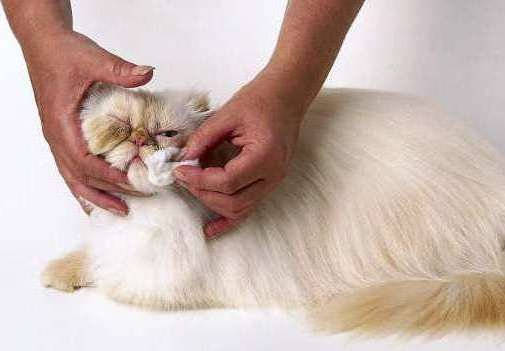
As a result, the fluid hardly drains, so it is necessary to wipe the pet's eyes every day with a cloth or a special wipe. If the secretions have dried up, they must first be soaked and then gently removed. Keep a close eye on your pet and if the eye discharge becomes strange in color, take him to the veterinarian right away.
You should also keep your cat's nose clean. Because of their nose, these animals are prone to runny nose. At least once a day, wipe the cat's nose and clean it if it is clogged. A clean, warm handkerchief can be used for this.
Taking care of the ears is no big deal. Every seven days, treat the ear drum and the inside of the ear with a cotton swab dipped in a special product. Squeeze the swab well before the procedure, so that the liquid does not get into the ear.
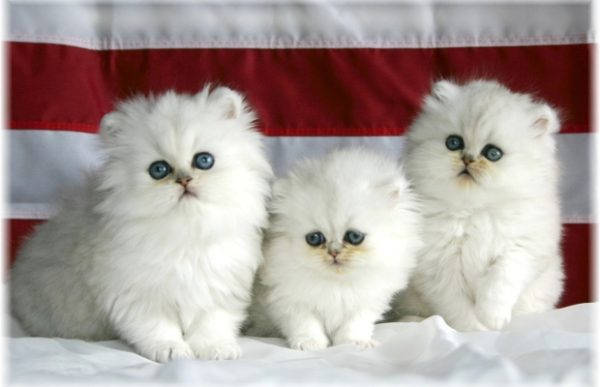
Another procedure that not all cats like is claw trimming. It is advisable to do it at the same time, for example, when the animal has eaten, then it will become a habit. And it will allow the owners to keep the furniture in good condition.
To cut claws, you should use a special tool, which is sold in a pet store. Claws on front paws can be trimmed once every 12-14 days, and on hind paws once every 30 days. You can do it yourself by pushing on the pad of the paw so that the claw appears. The sharp edge of the claw must be trimmed without touching the blood vessel, which is clearly visible.
Shearing Persian cats
Of course, it is better to use the services of a professional groomer to cut the pet, but having basic knowledge about this procedure will not be superfluous.
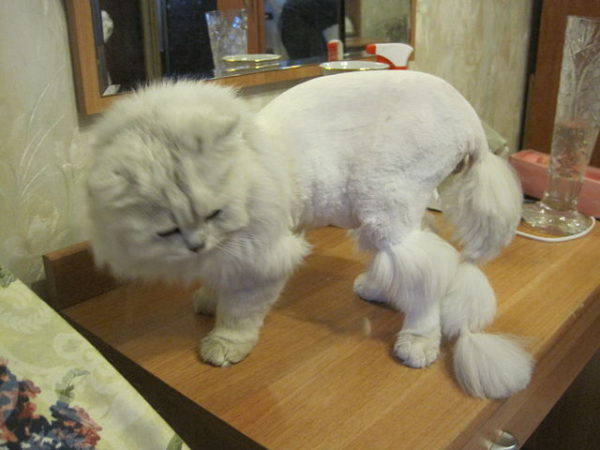
The Internet is full of photos with unusual haircuts of cats. If the coat of a Persian is neglected, it has a lot of tangles, a haircut can help in this situation. It is easier to remove the tangles and start proper care.
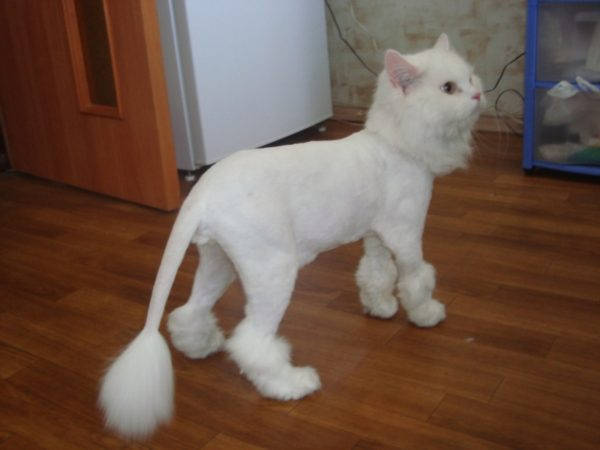
Usually the cat is washed before shearing, but if you just need to remove the tangles, you can do it with a dry coat. When going to the salon one should take into consideration that if the Persian cat aggressively accepts the haircut, most probably it will be trimmed under anesthesia.
The owners should also be aware that the haircut may change the color of the coat and its structure. Do not groom immediately before the show, otherwise the coat will not have time to grow. It is also strictly forbidden to cut hair in the ears, on the head and muzzle.






